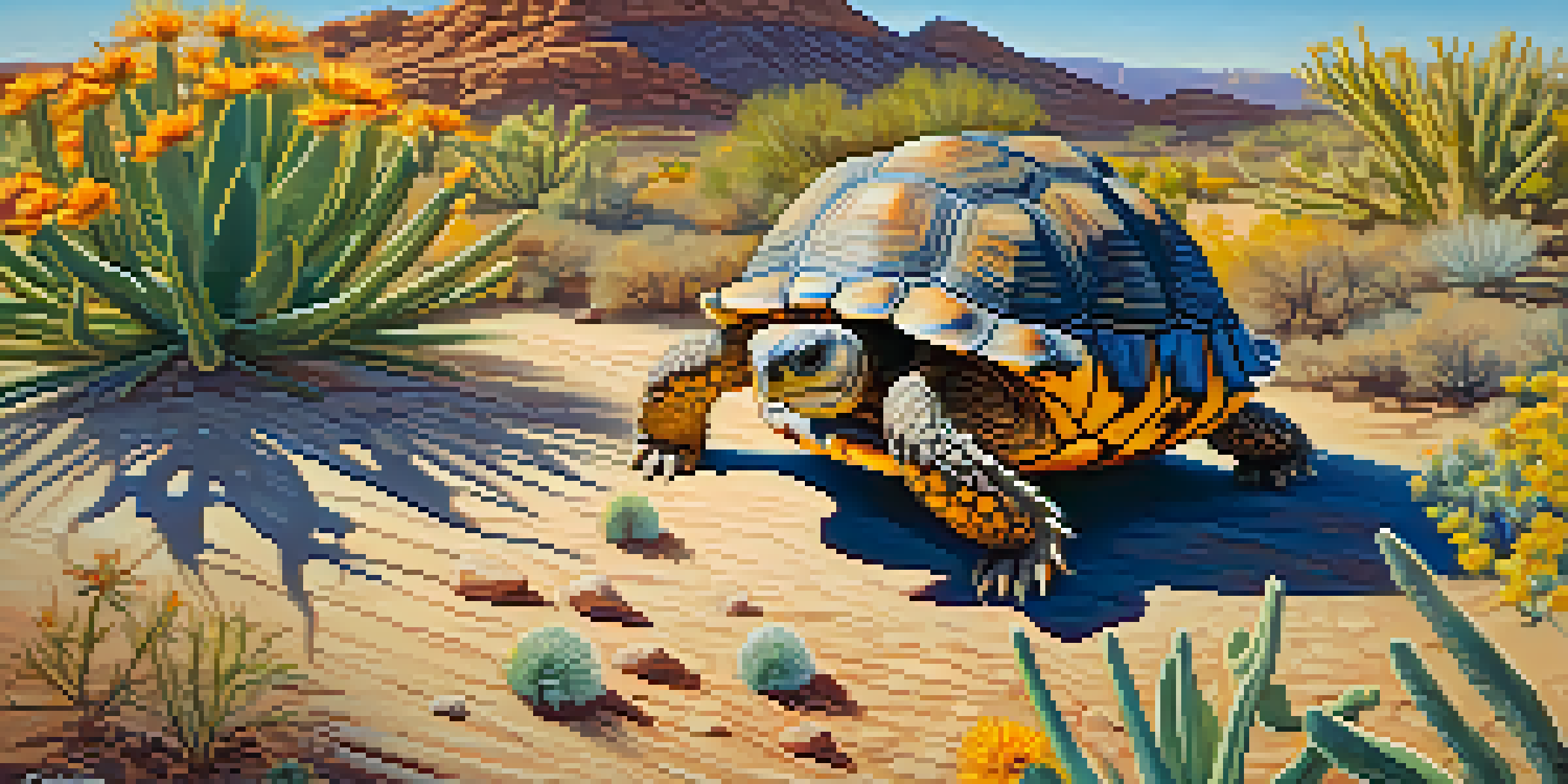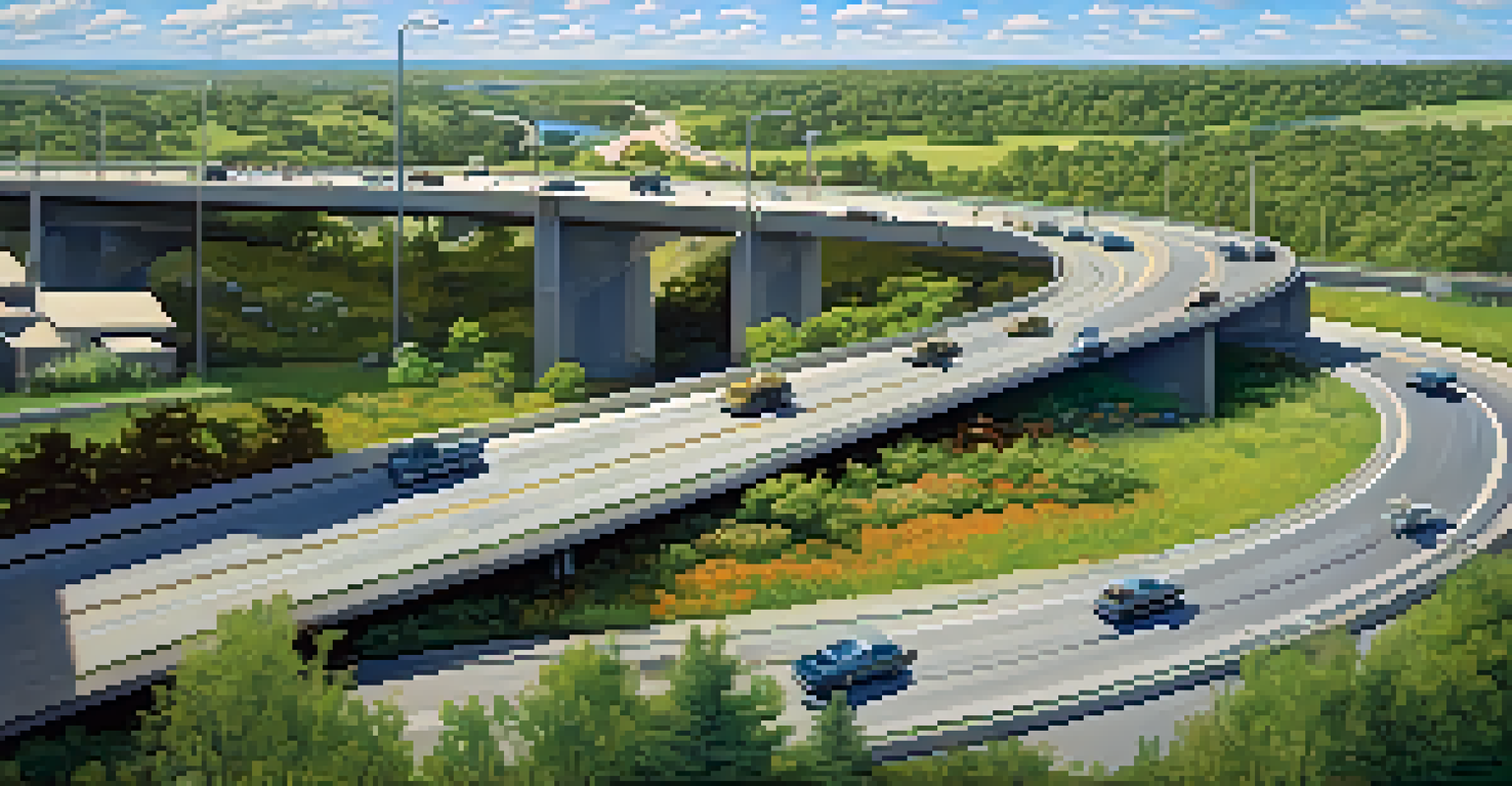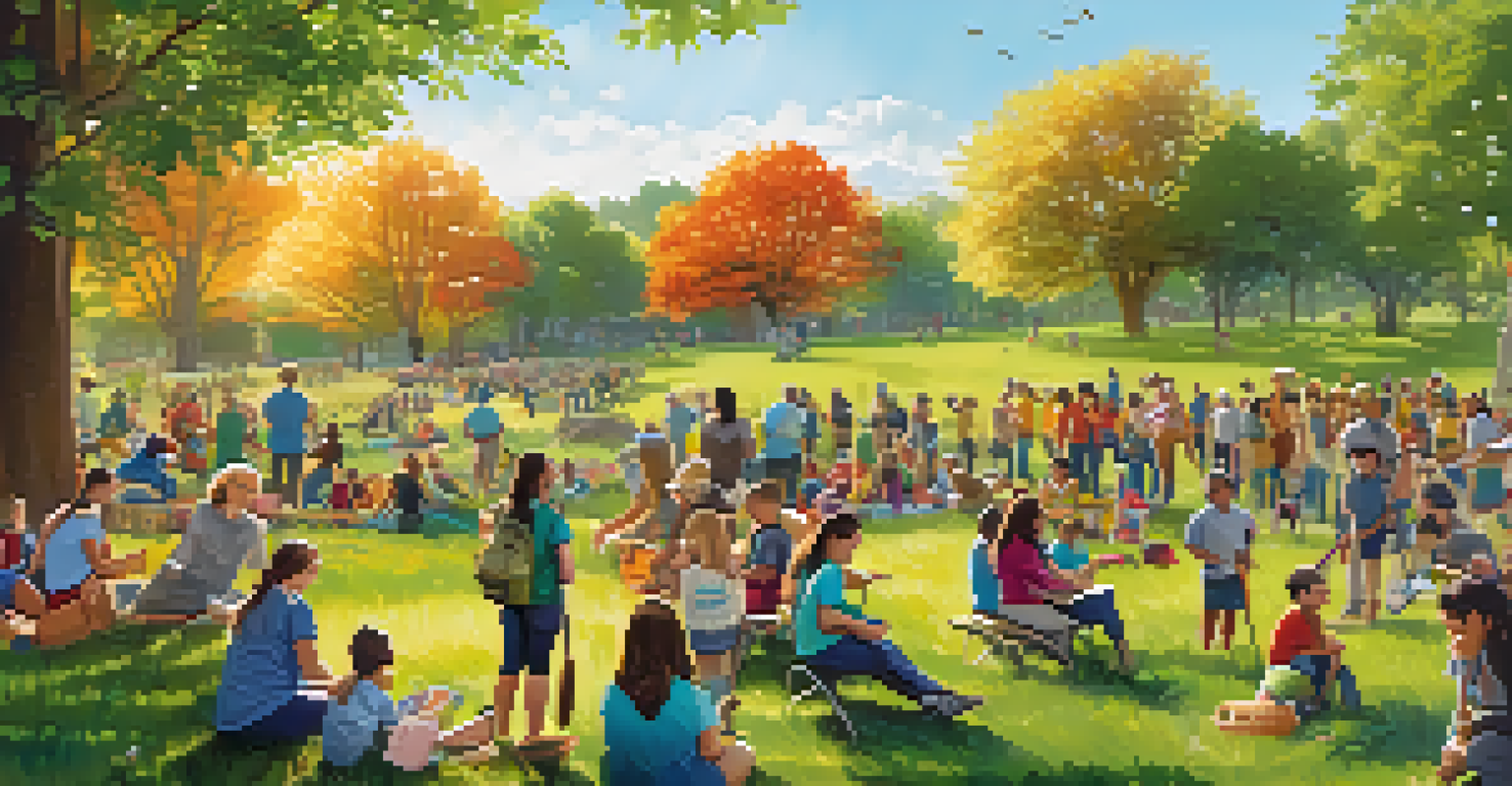How Urban Development Impacts Arizona's Wildlife Habitats

Understanding Arizona's Unique Wildlife Ecosystems
Arizona is home to a variety of unique wildlife, from the majestic desert tortoise to the agile bobcat. These species thrive in the diverse ecosystems found across the state, which include deserts, grasslands, and riparian areas. Each habitat plays a crucial role in supporting the local fauna, providing food, shelter, and breeding grounds.
In every walk with nature one receives far more than he seeks.
Unfortunately, as cities expand, these vital ecosystems face increasing pressure. Urban development often leads to habitat fragmentation, where larger areas are divided into smaller patches, making it difficult for wildlife to thrive. This fragmentation can isolate populations, hindering their ability to find mates and food, ultimately threatening their survival.
Moreover, the loss of habitat means that some species may be forced to adapt to urban environments or migrate to other areas. This can lead to increased human-wildlife conflicts, as animals venture into populated areas in search of resources. Understanding the unique ecosystems of Arizona is essential to recognize the impact of urbanization on wildlife.
The Role of Urban Sprawl in Habitat Loss
Urban sprawl refers to the uncontrolled expansion of urban areas into surrounding rural land. In Arizona, this phenomenon has led to significant habitat loss, as sprawling suburbs consume open spaces that once supported diverse wildlife. As new homes and businesses are constructed, natural landscapes are replaced by concrete and asphalt.

This transformation not only reduces the available habitat for wildlife but also alters the natural landscape, affecting the species that depend on these environments. For instance, the conversion of desert areas into residential neighborhoods disrupts the natural migration patterns of animals, making it harder for them to find food and mates. Consequently, some species face population declines or even extinction.
Urbanization Threatens Wildlife Habitats
The expansion of urban areas in Arizona leads to habitat fragmentation and loss, which jeopardizes local wildlife populations.
Furthermore, urban sprawl contributes to the introduction of non-native species, which can further threaten local wildlife. These invasive species often outcompete native species for resources, leading to a decline in biodiversity. By recognizing the impact of urban sprawl, we can work toward more sustainable development practices that prioritize wildlife conservation.
Water Resources and Wildlife: A Delicate Balance
Water is a vital resource for both urban areas and wildlife habitats in Arizona, where water scarcity is a pressing issue. As urbanization increases, the demand for water often leads to over-extraction from rivers and aquifers, reducing the availability of this essential resource for wildlife. This imbalance can have dire consequences for the survival of many species.
The Earth does not belong to us: we belong to the Earth.
For example, riparian zones—areas where land meets water—are critical habitats for numerous animals, including birds, amphibians, and fish. Urban development often encroaches on these zones, leading to habitat degradation and loss of biodiversity. As water sources dwindle, the delicate balance needed for these ecosystems to thrive is disrupted.
To mitigate these impacts, it is crucial to implement sustainable water management practices that consider the needs of both human populations and wildlife. By protecting and restoring natural water sources, we can help ensure that Arizona's wildlife continues to flourish despite the pressures of urbanization.
Pollution's Impact on Arizona's Wildlife
Urban development often leads to increased pollution, which poses a significant threat to wildlife in Arizona. Air and water pollution can have harmful effects on the health of various species, impacting their reproduction, growth, and overall survival. For instance, pollutants can accumulate in the food chain, affecting not just individual animals but entire populations.
Additionally, light pollution from urban areas disrupts the natural behaviors of nocturnal animals, such as owls and bats. These species rely on darkness to hunt and navigate their environments, and excessive artificial light can lead to disorientation and increased mortality rates. Understanding the implications of pollution is vital for protecting Arizona's diverse wildlife.
Water Scarcity Impacts Ecosystems
Increased demand for water due to urbanization strains vital resources, threatening the delicate balance of Arizona's wildlife habitats.
To combat these issues, communities can adopt eco-friendly practices, such as reducing waste and implementing green infrastructure. By raising awareness and taking action against pollution, we can help safeguard the health of Arizona's wildlife and preserve its rich biodiversity.
Wildlife Corridors: Bridging the Gap
Wildlife corridors are essential for maintaining healthy ecosystems amid urban development. These designated pathways allow animals to move safely between fragmented habitats, reducing the risks associated with habitat loss. In Arizona, establishing wildlife corridors can enhance connectivity and promote genetic diversity among species.
For example, wildlife overpasses and underpasses can be constructed to help animals cross busy roads without endangering themselves. These structures not only protect wildlife but also reduce vehicle collisions, benefiting both animals and humans. By integrating wildlife corridors into urban planning, we can create a more harmonious coexistence between nature and development.
Moreover, successful examples of wildlife corridors in other regions can serve as models for Arizona. Collaborative efforts between government agencies, conservation organizations, and local communities are essential to design and implement effective corridors that support the state's diverse wildlife populations.
Community Engagement in Wildlife Conservation
Community involvement plays a crucial role in wildlife conservation efforts in Arizona. By engaging local residents in habitat preservation initiatives, we can foster a sense of stewardship for the environment. Educational programs that highlight the importance of local wildlife and their habitats can inspire people to take action.
Volunteering for habitat restoration projects or participating in citizen science initiatives are excellent ways for individuals to contribute to conservation efforts. These activities not only benefit wildlife but also strengthen community bonds, creating a shared commitment to protecting Arizona's natural heritage.
Community Action Supports Conservation
Engaging local communities in wildlife conservation fosters stewardship and promotes sustainable practices to protect Arizona's ecosystems.
Additionally, advocating for policies that prioritize wildlife conservation in urban planning is vital. When communities unite to voice their concerns, they can influence decision-makers to adopt sustainable practices that balance development with the needs of local wildlife. Together, we can make a significant difference in preserving Arizona's unique ecosystems.
The Future of Urban Development and Wildlife in Arizona
As Arizona continues to grow and urbanize, it is essential to consider the future of wildlife habitats in this changing landscape. Sustainable urban development practices can help mitigate the negative impacts of growth on wildlife. By prioritizing green spaces, wildlife corridors, and eco-friendly designs, we can create urban environments that coexist with nature.
Moreover, ongoing research and monitoring are crucial to understanding the long-term effects of urban development on wildlife populations. By gathering data on species' responses to urbanization, we can make informed decisions that benefit both humans and wildlife. Adapting our strategies based on scientific findings will be key to successful conservation efforts.

Ultimately, the future of Arizona's wildlife depends on our collective commitment to responsible urban development. By recognizing the intrinsic value of wildlife and their habitats, we can work together to create a sustainable future where both people and animals thrive.